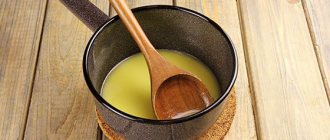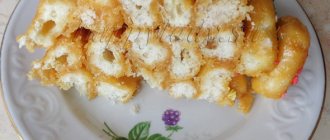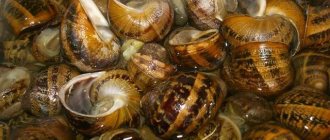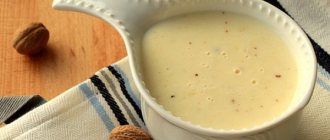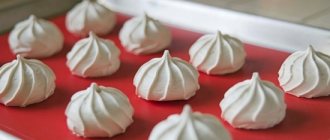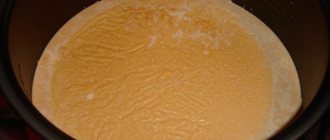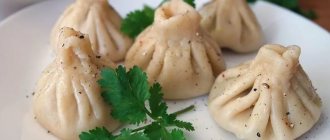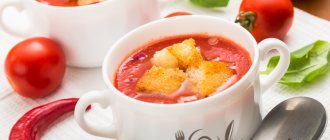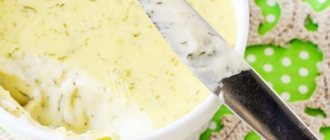This irreplaceable product is quite widely used for preparing certain dishes, for medicinal purposes, and in cosmetics. People have long been attracted to its qualities. Ghee at home lasts much longer than regular butter. It contains useful substances and microelements, for example, magnesium and zinc, which are so necessary for the proper functioning of the body. And if many nutritionists consider ordinary butter to be harmful, then with ghee the situation is completely different. Some doctors even recommend it. How to prepare ghee at home will be discussed in our article.
What does it consist of?
In India and Pakistan, where this product is especially common, they say that according to the rules, the prepared melted butter should have a subtle aroma of nuts. What does it actually represent? This is nothing more than 99% butter fat obtained as a result of dehydration of ordinary raw materials - butter. This is a slightly cloudy product of golden and yellow color, very high in calories. When consuming, you should not forget that 892 kcal per 100 grams is no joke for those on a diet!
We use butter to prepare many dishes. It has a delicate consistency and an unusual milky aroma. Finding a quality product today is not so easy, since manufacturers add ingredients that should not be present. Stabilizers, preservatives and dyes... Homemade butter is considered the most delicious and healthy, but not everyone has the opportunity to purchase it. Therefore, if you buy it in a store, do not skimp on your purchase and be sure to read the composition. In addition, you can “purify” the product at home and make it as healthy and natural as possible.
How to melt butter at home: tips
Why drown it and what will it give? First of all, you can eliminate all unnecessary components that negatively affect the taste and quality. After processing, the oil will become more delicate, with a pronounced creamy taste. It can be used for frying, adding to porridge, etc. In addition, the process will only take a few minutes and you can clean the product even at home, without special equipment.
The difference between ghee and butter is that it is more susceptible to high temperatures and you can fry food with it, it will not burn or become bitter. After exposure to high temperature, the creamy taste remains. In addition, there are practically no impurities in the melted product, since they remain at the bottom.
How to melt butter at home? This is not difficult to do; first, simply cut the butter into small cubes with a knife. You will also need a saucepan with thick walls, put oil in it and place the container on low heat.
Check out our post How to Choose Quality Butter
You will see that when heating the oil a light foam begins to form, remove it. When all the butter is completely melted and becomes transparent, remove the pan and strain through cheesecloth. Pour it into a glass container and let it cool completely.
You can also melt the butter in a water bath; this method is more gentle and allows you to preserve the beneficial substances. You need to build a water bath and place the chopped butter in the top container. After it has become liquid and transparent, leave the product in a water bath for another hour. Just as in the previous version, do not forget to constantly remove the foam.
Once the ghee has cooled and set, you can place the container in the refrigerator.
How to melt butter in the oven?
This method will save a lot of time and effort. You need to preheat the oven to a temperature of 150 degrees, no more. Place the chopped butter in a saucepan, cover the container with a lid, and place in a preheated oven. After two hours, remove the container and strain the oil through gauze folded in 2-3 layers. Pour the product into a glass container, let it cool, cover with a lid and store in the refrigerator.
What kind of butter should I use?
In order to end up with a quality product, you need to choose the right butter. First of all, it should not contain any additives in the form of salt or spices; its fat content should be as high as possible. You can also choose an oil with a higher fat content.
Ghee is more economical to use, since it can be used for frying not just once, but several times; do not forget to strain it through cheesecloth to eliminate food particles. From a kilogram of butter you will get 600-700 grams of ghee.
When melting, be careful not to burn the butter. If this happens, try to immediately pour it into another, clean pan and continue the procedure.
Women's site Delafe.ru
A little about the benefits
But, oddly enough for such a high fat content, this oil is perfectly absorbed in the stomach and helps to absorb other foods, having a beneficial effect on the processes of food digestion. Nutritionists say that it has protective properties: it increases immunity and protects the stomach from harmful substances, and rids the body of free radicals.
Ghee, prepared at home, is a wonderful and inexhaustible source of fatty acids, the constant consumption of which in food has a beneficial effect on the entire body as a whole (this is best seen in the hair and nails). A is a “visual” vitamin. E – antioxidant. Vitamin D is used to prevent rickets. In this regard, ghee, obtained at home, can be considered not only a very useful product, but also a real natural medicine that tones, rejuvenates, strengthens the immune defense, and normalizes the functioning of the central nervous system.
Tips for making delicious ghee at home
An ingredient such as ghee is often found in ancient culinary and medical recipes. It becomes interesting whether there is such a difference between simple and this legendary oil. And it is: taste, aroma, frying properties, shelf life - everything is different. And this delicacy can be made at home without fancy equipment or rare ingredients.
In addition to being used in cooking, ghee is used in folk medicine of many cultures. It helps with diseases of the gastrointestinal tract, and with ailments of the bronchopulmonary system, tonsillitis, and is not contraindicated for people suffering from allergies. This ingredient is often mentioned in the ancient practice of Ayurveda for both healing and maintaining beauty and youth.
For those who want to try such a tasty and healthy product as ghee, the recipe for making it at home is very simple. To do this, you only need butter or homemade oil and a set of dishes. The most important thing is that the kitchen utensils are not aluminum and do not emit any foreign odors. This will ruin the specific nutty aroma of the final product. But for storage, glass jars of any convenient container are best suited. The best signs of the quality of finished ghee are its grainy structure and lack of plasticity when cold. It should have a pleasant smell and a beautiful golden-amber color.
Step-by-step instruction
To prepare ghee from butter according to a recipe that was practiced in Rus' and Europe, you need the butter itself and clean water. From experience we can say that 1 kilogram of regular butter yields about 800 grams of ghee. Next, you just need to follow a simple algorithm:
- Cut the butter into cubes into a thick-bottomed pan and add a glass of hot water.
- Over low heat, melt the butter until liquid and put it in the cold to cool.
- In the frozen oil layer, make a hole at the edge with a knife and drain the liquid formed from below.
- Repeat the procedure of grinding the oil, heating it with water and then cooling it several times until the drained liquid becomes clear.
- The last time the ghee is melted without adding water and poured into a storage container, at the bottom of which several crystals of coarse salt are first placed.
- After hardening, the container with the oil is closed tightly with a lid and put into the refrigerator or cellar.
to contents ^
In India, ghee was called liquid gold, and it served as a sign of wealth in the house along with the precious metal. In Ayurvedic recipes, oil prepared in this way is called chula ghee. Knowing how to make ghee at home, you can vary the recipe by adding precious Indian spices to experience variations in taste and enhance the healing effect of the product.
To prepare ghee, you will need a container that is at least one and a half times larger than the volume of the original product.
- Preheat the oven to 150 °C.
- Place a pan with butter in it without covering with a lid.
- Without changing the heating mode, without stirring, leave the butter in the oven until a caramel-colored crust appears on its surface. For a kilogram of the initial product this will be about an hour, for 5 kilograms - 7 hours.
- Remove the container from the dish and use a slotted spoon to remove the resulting dark layer from its surface.
- Through a sieve lined with several layers of gauze, strain the liquid golden fraction into a storage container without pouring the whitish sediment.
- Cover with a lid and store the ghee in a cool place.
In a slow cooker
Progress to help housewives in the kitchen creates smart assistants. Therefore, the recipe for making ghee using a slow cooker is now very relevant.
- On the “Fry” mode, melt 1 kilogram of butter.
- Remove the formed foam from the surface with a slotted spoon.
- Switch the multicooker to a mode with a temperature of 110 °C and continue cooking without closing the lid, periodically removing foam formations from the surface of the oil.
- If the oil begins to boil or smoke during cooking, immediately reduce the temperature to 100 °C.
- After 2.5-3 hours, the ghee will turn golden amber in color, indicating its readiness.
- Strain through several layers of cheesecloth into a container with a tight-fitting lid and store in a cool place.
to contents ^
The recipe for making ghee allows you to obtain a unique product with a long shelf life, because during the cooking process the remaining buttermilk and protein are removed from it, and the output is pure milk fat. If sterile conditions are met during cooking, it can be stored for about a year without losing its properties and quality.
Knowing that ghee improves the taste of any dish and does not stay in the refrigerator for a long time, you don’t have to take any additional tricks to extend its “life.” However, you should know how to store ghee at home if it is not possible to ensure temperature conditions or if it is being prepared for future use. Immediately after solidification, ghee is poured with a solution of salt and water, which helps preserve it and stop the access of air and pathogenic bacteria. If you plan to use a freezer, then no additional conditions are required.
https://woman-l.ru/prigotovlenie-toplenogo-masla/
On fire
You will need half a kilo of butter with regular fat content (72-82%) and a saucepan with a dense bottom, preferably non-stick.
- Cut the butter into small pieces (you can grate it). Place in a saucepan.
- Place the dishes on the lowest heat possible. The product gradually melts. Periodically, the pieces must be turned from place to place so that they do not burn (do not let them brown).
- We cook the product in a similar way over low heat for about 20 minutes (but do not boil), constantly skimming off the foam and avoiding burning. Stirring is not recommended for the reason that impurities usually float out like foam (which we safely remove) and sink to the bottom as sediment. The sediment should not be allowed to rise to the top.
- How to make ghee at home? If you monitor the color of the product being prepared, the oil will initially be dark with yellow and cloudy. Gradually it becomes more of an amber color, almost transparent. Then it must be poured into another container so that the sediment remains, smoothly and carefully.
- In another pan, heat the oil for another 15 minutes. Make sure that it does not boil. A well-defined amber color and transparency are signs that the product is ready.
How to make ghee
Ghee is prepared from ordinary butter, and during the heating process the taste and composition of the product undergo noticeable changes. As a result of processing, excess water and various impurities are removed from butter, so ghee is considered a much more tasty, nutritious and healthy product. It does not create additional stress on the liver and helps maintain a good state of the human immune system. Unfortunately, it is not always possible to purchase really high-quality and tasty ghee, so you need to know how to make ghee at home if necessary. The starting product is regular butter, which can be purchased at the market or grocery store. For heating, it is better to choose high-quality oil with a high percentage of fat content (the fat content should be at least 70%, only in this case the result will be good).
You can heat oil in deep enamel, ceramic or metal containers. Before heating, the butter must be cut into small cubes or grated on a coarse grater. Heat a saucepan with butter over medium heat until it is completely melted. After this, reduce the heat to the minimum possible and continue heating, periodically carefully removing the foam that rises to the top. As a rule, at first the oil actively foams and becomes cloudy, but as impurities rise to the top in the form of foam and are removed, the oil takes on a delicate amber-honey color and becomes completely transparent. This usually takes 15-20 minutes (if the oil weighs about 500 g). If you heat 1 kg of oil or more, then processing will take at least an hour.
After the oil has become transparent, it should be poured into another container, and all actions must be very careful and careful - sediment accumulates at the bottom of the pan during the heating process. This sediment should be left at the bottom by pouring the oil into another pan. By the way, the better the quality of the source material, the less sediment will fall during the heating of the oil. Try not to overheat the oil, otherwise the sediment may burn and the finished oil will have an unpleasant aftertaste and a pungent odor.
As a result, you should get transparent, homogeneous ghee of a light amber color, with a characteristic pleasant taste and a slight nutty aroma. This oil keeps well in the refrigerator (and for quite a long time - about a year or more). Ghee can be added to baked goods and confectionery: it gives dishes a pleasant smell and delicate taste.
In the oven
How to prepare ghee at home in the oven? This is also quite simple to do, the main thing here is to observe the temperature regime.
- Preheat the oven to 150 degrees. Place a kilogram of chopped unsalted butter in a saucepan. The dishes should be chosen in such a way that the oil can be placed freely, and there is still up to 10 centimeters left to the edges.
- Ghee at home in the oven is prepared at a temperature of just under 150 degrees (constantly monitor the temperature - it should not boil and burn, but rather heat) for one and a half to two hours.
- Do not stir the oil. The result should be a golden product with a thin film on the surface and flakes of sediment at the bottom. We remove both from the mass. Remove the film with a slotted spoon. And to get rid of sediment, we express the product through gauze into a jar. Typically, two to three centimeters of sediment remains at the bottom of the pan, which can also be used for culinary purposes, for example, for baking.
Ghee at home - cooking in the oven
This method is the most optimal if you need to make a considerable amount of ghee at home. In this case, the heating procedure will be carried out practically without human intervention - since the heat in the oven surrounds the container with oil from almost all sides, and not just at the very bottom.
The size of the container depends on the initial amount of oil that will need to be melted. In any case, it is highly undesirable to fill the pan to the brim - there should be at least 8 cm of free space from the surface of the oil to the edges of the pan.
So, how is ghee prepared at home in the oven? There is the following algorithm of actions:
• preheat the oven to a temperature of 150 degrees;
• take the butter and cut it into small pieces, each weighing approximately 100 g;
• place the pieces in a pre-prepared metal pan with thick walls and a thick bottom;
• leave the mass in the oven and carefully monitor the process - at the moment of heating, the product will slowly clear itself of impurities, and will eventually form into an amber-golden mixture with a thin crust on the surface and a light golden hue of sediment at the bottom;
• as soon as the ghee at home is ready, remove the pan from the oven (the cooking time depends on the weight of the original product - to melt half a kilogram of butter, it will take about an hour and a half, 15 kg of butter will take about half a day);
• then remove the hardened film from the surface with a spoon or a special slotted spoon and transfer the mixture into a small jar;
• the next step is to strain the clear oil through a sieve with gauze - pour through it as much oil as can be poured without affecting the sediment;
• scoop out the remaining oil (about 2.5 cm from the bottom of the pan) with a spoon;
• wait until the oil cools down a little;
• pour the ghee at home into a storage container, and after it has cooled to room temperature, close it with a tight lid;
• the remaining ghee along with sediments should be poured into a small jar, into which the hardened foam has previously been poured, and used for cooking various dishes.
In a slow cooker
How to make ghee at home using a slow cooker? This can be done as easily as possible. Take half a kilo of unsalted butter of medium fat content, cut it into pieces and put it in a multicooker bowl. To melt the butter, turn on the “Baking” mode for five minutes. Then select “Stew” from the menu and leave the product for an hour and a half. We don’t close the lid and for the first ten minutes we constantly skim off the foam that forms, which is quite loose. In this way, the oil is freed from some of the impurities and additives. At the end of the multicooker operation, pour the melted butter, obtained at home, through cheesecloth into a jar so that no sediment gets in (it can also then be used for culinary purposes). And some people prefer to simply pour this sediment out.
How to make ghee
What is the cooking principle? Any recipe requires the mandatory removal of impurities and water. When overheating, the oil must not be allowed to burn, since only the existing sediment should be affected by the temperature.
To achieve the desired results, it is recommended to use a pan with a thick bottom and resistance to burning. In addition, it is assumed that it is necessary to simmer only over very low heat.
How to choose butter
You can buy oil that has a high fat content. It should have the following important indicators and characteristics:
- optimal salt balance;
- no chemical additives;
- fat content – 82.5 percent.
Reviews from many people confirm that this is exactly what is ideal for preparing ghee.
In the future, it is recommended to watch the video and carefully study all the cooking recipes. In each case, the same principle for preparing a unique oil is assumed.
Cooking sequence
- Initially, take several sticks of butter and place them in a saucepan. It is advisable to cook on low heat. It is advisable to use a pan with thick walls or a non-stick coating.
- The butter should melt. In this case, it is advisable to avoid burning.
- After boiling, leave the ghee on the lowest heat for 40-50 minutes. It should simmer gently. It is not advisable to remove foam, stir or influence the product in any way.
- The oil will then separate into three parts: foamy clumps, a clear part and a brown residue.
- Now you can turn off the stove.
- Ghee is filtered into jars through cheesecloth and a sieve.
- The finished oil should be golden amber and transparent. Another important difference is the nutty and creamy aroma.
Using a similar principle, ghee is prepared in the oven and in a slow cooker, as well as in a water bath. The most important thing is to bring the butter to a melted state and separate exactly the desired part.
How to store ghee in the future? It is best to store the product in the refrigerator. In this case, ghee is used in a warm state. However, storage conditions must be airtight, since outside influences will still worsen the characteristics of the finished product, which will be initially healing.
Ghee: homemade ghee recipe
When preparing ghee (or ghee, as this product is called in South Asia), water, milk proteins (and milk sugar) are removed from the oil, which allows it to be consumed even by people whose bodies cannot digest lactose. Traditionally in India, to produce ghee in the amount of 1 kilogram, 1.7 liters of heavy cream are taken (which, in turn, is obtained by separation from 30 liters of milk). The cream is then whipped into butter. After this, the product is heated in small portions (1 kg each) over low heat over wood. On average, preparing ghee at home requires about an hour of time for each serving. Ghee is usually produced on small farms using this age-old method. It differs from industrial production by prolonged boiling of the oil, which cleanses it of casein and milk solids. As a result, the product becomes caramelized and acquires a nutty flavor. For medicinal purposes, oil is used that takes longer to “ripen” in its already prepared form.
Ghee: benefits and treatment. How to make ghee at home
Home / Useful remedies / Ghee: benefits and treatment. How to make ghee at home /
Ghee is considered a very healthy product: Hindus consider it almost liquid gold - in the sense that it has a surprisingly beneficial effect on human health. Of course, ghee was also used in Russian cuisine, but today it has almost been forgotten, and not many recipes for its preparation can be found.
But in many sources you can find a description of the properties of ghee from the point of view of Ayurveda - the ancient Hindu science of a healthy lifestyle. It cannot be said that we do not understand at all the attitude of Indians towards this product, but many of our compatriots think that they exaggerate its healing properties too much - if everything is so simple, then why don’t they know about it here? After all, in Russia, dairy products, including butter, have always been very popular among all segments of the population - why don’t we use it in the treatment of diseases?
In fact, ghee does have healing properties, but due to sharply different dietary habits, these properties in our country could not manifest themselves as in India and other Eastern countries. Russians are accustomed to traditionally consuming a lot of different protein foods - meat, fish, poultry, generously flavoring them with fats; Hindus are more committed to plant foods, which go well with ghee - they call it ghee or ghee.
Ghee production
Few people know exactly how to prepare ghee. Most people buy it in a store, believing that if the packaging says “ghee,” then this is that natural, healthy product. At best, you can buy butter prepared in the correct industrial way: first, it is melted at a temperature of 40-50°C, and water, milk sugar and milk protein are separated using a centrifuge. The remaining butter fat is quickly heated to 100°C in special vacuum boilers - during which all remaining water evaporates, then whipped using compressed air and packaged in sealed packages.
Unfortunately, many manufacturers, wanting to reduce the cost of the process, add vegetable ingredients to such butter, and also use non-standard or even spoiled butter as raw materials - really, what kind of butter should be melted? They even manage to use a completely spoiled product as a raw material: when reheating, they add hot water to it - about 15%, a small amount of soda and other additives that eliminate the unpleasant smell and taste.
How to make ghee at home
It’s still better to prepare ghee at home, on your own, but you don’t always have the time and energy for this; then you should be more careful and choose the most famous and trusted brands, both foreign and Russian.
High-quality ghee does not have any special tastes or smells - it should have the smell and taste of rendered milk fat. The consistency of the butter is soft but grainy; if you melt it, it will be transparent, uniform in color, yellow or light yellow - there should be no sediment either.
Recipes for making ghee vary greatly. There are many recipes where it is recommended to simply melt it in a saucepan, collecting the foam with a slotted spoon and removing solid particles until the water has completely evaporated from it, and then strain. You can do it this way - it will still be healthier than butter with milk proteins and liquid; The result will be clear, golden-yellow oil, and food cooked with it will be much tastier than usual.
For example, if you fry fresh mushrooms in this oil, and then pour it on top and put it in the refrigerator, they can be stored for several months and remain fresh, as if they had just been picked and cooked. Ghee is great for frying - it doesn't smoke or foam, and becomes even healthier over time.
However, such oil does not have the medicinal properties mentioned in Ayurveda - real ghee, used for the treatment and prevention of diseases, is prepared according to other recipes, which are completely simple and do not require special conditions.
Preparation of ghee
It is better to prepare ghee from homemade butter, but if you don’t have it, you can choose it in the store, carefully reading the composition and checking for hardness - real butter always becomes very hard in the refrigerator. To prepare ghee, you need to boil water in a large saucepan and place a smaller saucepan in it - so that its bottom is in the water, but does not touch the bottom of the large saucepan.
The oil is placed in the top pan - it can cook for several hours; first it will melt, and then foam will appear on it - it must be removed; A sediment forms at the bottom - there is no need to touch it.
If you put 1 kg of high-quality butter in a pan, then after 4-5 hours it will turn out to be real ghee - transparent, golden or amber-yellow - this depends on the degree of its fat content. When the sediment at the bottom becomes clearly visible through the melted butter, you can remove the pan from the water bath and carefully drain the oil so that this sediment does not get into the finished product. You can also strain the ghee through cheesecloth - then there will certainly be no impurities left; Thickened ghee may have a whitish-yellow color.
When the butter is melted in this way, it is cleared of everything unnecessary - milk proteins, water, etc., and it cannot burn, even if you are distracted and “overlooked” at the cooking process. You can use an enamel or glass pan - no need to take an aluminum one.
Properly prepared ghee can indeed be stored for years - this only increases its medicinal properties. Of course, we are unlikely to store it - we will quickly run out of it, but even if we replace regular butter in our diet, our health will definitely improve in many respects.
According to Ayurveda, ghee is much easier to digest by the body than regular butter; it does not raise blood cholesterol levels, improves digestion and strengthens the immune system; improves the condition of tissues, has a beneficial effect on perception, mental activity and the human reproductive system.
Benefits and properties of ghee
When in the fall, in cold and windy weather, the nasal mucosa begins to dry out - this happens to many people - you need to lubricate it with melted butter - this will protect you from colds and infections.
In cosmetic terms, ghee is also miraculous - it can quickly penetrate the pores of the skin and is perfectly absorbed into it. Getting inside the skin layers, it begins to dissolve and remove salt waste and toxins accumulated in them, so that the skin after procedures with ghee - for example, after a massage - becomes soft, smooth and tender.
Treatment with ghee
As for treatment with ghee, there are some nuances. If you have a weak immune system, for example, it is recommended to use it in the morning, along with spices - fennel, saffron, cardamom, etc.; nuts, dried fruits, honey; fermented baked milk, sour cream, cream, but apart from these products, you don’t need to eat anything else for breakfast.
Inflammatory processes, digestive disorders, and metabolic disorders are treated with a mixture of ghee (2/3) and medicinal herbs (1/3), smearing certain areas of the body with this mixture or simply holding it in the mouth.
Migraines, atherosclerosis and other diseases can also be treated in a similar way, but the effect of such treatment is promised only to vegetarians - this is what followers of the teachings of the Vedas say. They call meat, fish and eggs “products of violence” - hence it is clear why in Russia, as in European countries, the treatment of diseases with the help of ghee has never been used - our dietary traditions make such treatment impractical.
However, no one is stopping us from using ghee in cooking. Replace regular butter and other animal fats with it, and you will soon feel that it has become easier to move, and your mood always remains upbeat and cheerful.
Recommended news
- Useful tools 07/27/2020
Sage oil to support hormonal balance
- Useful tools 07/21/2020
9 Natural Remedies to Combat Anxiety
- Useful tools 03/02/2020
Amazing properties of bergamot oil
- Useful tools 03/16/2020
5 tips to keep your hair clean longer
- Useful tools 05/26/2020
12 essential oils that are useful to have on hand
- Useful tools 05/09/2020
Liver cleansing + allergy treatment
Use in cooking
In the national cuisines of Pakistan and India, ghee is traditionally one of the most common dietary fats. Dishes like dal, roti, sabji, puri, samosas, ladoo, halwa are incomplete without it. By the way, such oil is not toxic when exposed to temperature, and begins to smoke only at 250 degrees and does not burn.
In our latitudes they flavor various kinds of porridges. Various foods are also fried on it (as it has non-stick properties). Oil is used when roasting meat and fish. And pilaf with melted butter is a rare delicacy! It is also customary to add it to some types of sweet baked goods, which improves its taste. Now, knowing how to make ghee at home, you can prepare many delicious and original dishes. For example, pilaf according to the following recipe.
Ghee butter at home ✨ How to make homemade ghee butter
#GheeButter #Ghee #1000menu Homemade, aromatic, healthy and very tasty! Ghee is a universal product; it can be used for frying, it can be added to all dishes, it does not spoil and does not burn. During the heating process, all excess impurities are burned off, and only fat remains. This is why it can be stored for so long. How to make Ghee at home? Watch the video recipe and step-by-step recipe at the link
